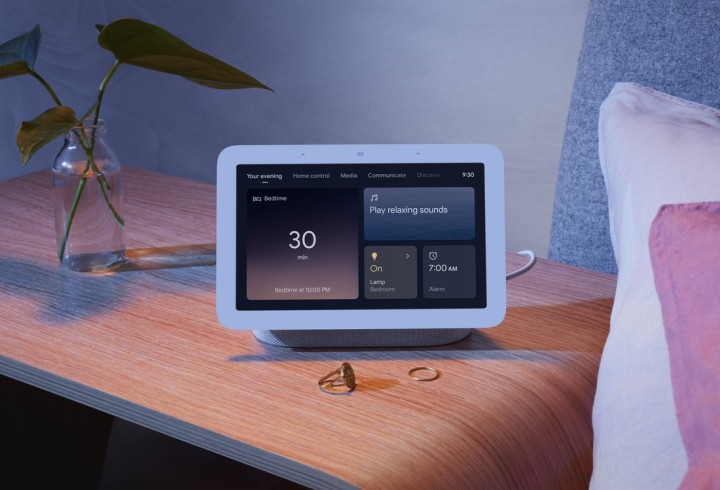Google has launched the second generation Nest Hub, updating its audio components and smart home features and introducing a new capability: monitoring sleep.
Among the latest features is Quick Gestures that allows you to pause and play content and snooze your alarm clock by holding up your hand or waving it across the screen. Since the Nest Hub devices exclude a camera, Quick Gestures is powered by Google’s proprietary Soli motion sense technology. In terms of audio, the second generation Nest Hub equips 50 percent more bass, delivering 200 hertz at max volume in contrast to the 40 hertz its predecessor delivered. You can pre-order the Nest Hub today, ahead of its official release March 30th.
Google Nest Hub (2nd-Gen)
The device includes an on-unit machine learning chip that helps the Nest Hub learn your most common commands so it can build a quicker response — Google claims they do not retain your audio recordings and you can delete any recent activity by simply saying “Hey Google, delete everything I said last week.” Like other smart hubs on the market, Google’s Nest Hub is designed to be the center of your smart home by informing all your connected devices from one place so that you can lock doors, turn on the lights, and check your front door camera all with voice commands and automations.
Its launch aligning with Sleep Awareness Week, the Google Nest Hub’s most notable new feature is Sleep Sensing, also powered by Soli’s motion sensing technology. Simply place the Nest Hub on your bedside table, facing you as you sleep. Soli’s technology comprises low-energy radar that only detects your movements and not any specific bodies or faces.
The Nest Hub analyzes your movement and breathing throughout the night to track when you go to sleep, wake up and how long you stayed asleep for. Using the Nest Hub’s built-in microphones, ambient light sensors and temperature sensors, Sleep Sensing can also detect any disturbances to your sleep such as coughing and snoring, as well as light and temperature changes.
As you use this feature, the system begins to build a better understanding of your sleep patterns to give you personalized recommendations. On top of these personalized recommendations, Google has partnered with the American Academy of Sleep Medicine (AASM) to provide users easy access to their sleep science intel. Sleep Sensing will be available as a free preview for users until sometime next year and can be disabled if you are not interested.
Catch up on Select's in-depth coverage of personal finance, tech and tools, wellness and more, and follow us on Facebook, Instagram and Twitter to stay up to date.




